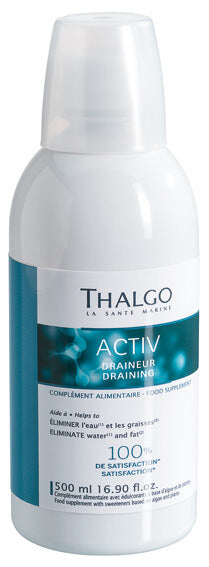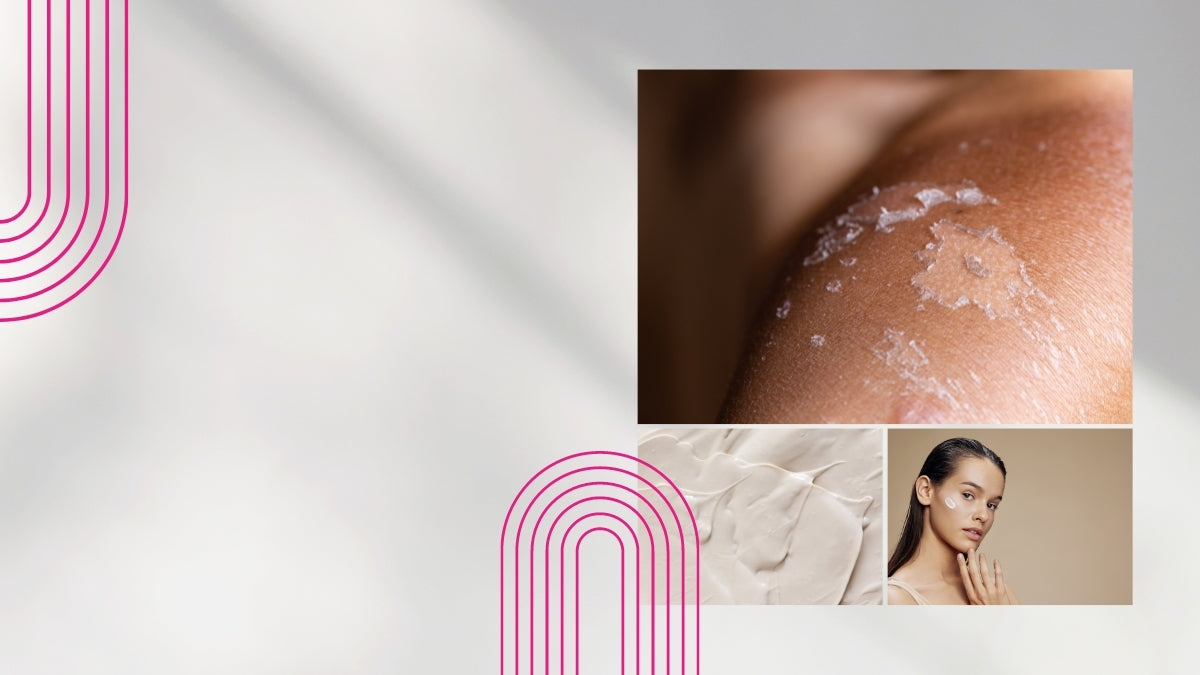AND SOMETIMES IT HAPPENS... HOW TO TREAT LIGHT AND SUN DAMAGED SKIN
No question: sun is good, but too much damages our skin cells - and permanently. The type A UVA, B and infrared rays contained in sunlight attack the cell structure of the skin. Even if you avoid excessive sun exposure and protect yourself with adequate sun care, you sometimes cannot prevent visible and noticeable damage to your skin.
Although humans need sunlight to produce vitamin D, which is not their own, they can only cope with damaging radiation to a certain extent and therefore need appropriate sun protection. What we perceive as tanning is actually a protective reaction of the skin, because the skin reacts to the sun's rays by forming a “protective melanin coat” that wraps itself around the cell nuclei. It prevents UV radiation from penetrating the deeper layers of the skin.
If the skin's own protection time has been exceeded, UV rays can attack the cell structure there. Even before persistent sun damage appears in the form of dryness wrinkles, loss of elasticity or irregular pigmentation, the skin already reacts to too much sun, for example with
- Feeling of tension and heat
- Itching and burning
- light-related, allergic reactions such as pustules or poplars
- Excessive or irregular pigmentation
- mild to severe redness and even sunburn
These skin reactions should be taken seriously and should be treated immediately with appropriate care for sun-damaged skin in order to prevent or prevent the damage caused to the skin by the cell-destroying UV light as quickly as possible. to repair.
What is sunburn and what consequences can it have?
A sunburn, medically known as dermatitis solaris, is an acute inflammation of the skin caused by the UV radiation contained in sunlight or UV radiation from artificial sources such as solariums is caused. The symptoms are similar to those of a burn and are divided into three degrees:
- Grade 1: Mild sunburn in which the affected areas of skin become red, tense, feel warm and possibly also swell slightly. As it progresses, the skin begins to itch or burn.
- Grade 2: Moderately severe sunburn with severe redness, tenderness and severe sensitivity to touch. Blistering of the skin may occur. As it progresses, the skin begins to peel.
- Grade 3: Symptoms correspond to a moderate to severe burn; The top layers of skin are destroyed and peel off with painful blistering. Scars may remain.
A large area of sunburn can be accompanied by symptoms such as chills, fever, headache, nausea, dizziness or vomiting. In these cases, you should urgently consult a doctor. Under no circumstances should you open any burn blisters yourself, as there is an increased risk of infection. People with light skin are particularly susceptible to sunburn because their skin only stores a small amount of melanin, which protects cell nuclei, and is therefore unprotected from sunlight.
If sunburn occurs frequently or over a longer period of time,
- The skin ages faster because its collagen structure is permanently damaged
- There is an increased risk of skin cancer because damaging radiation changes the cell structure and cell mutations can occur
Treat a sunburn with the right care
How a sunburn is treated depends primarily on its severity. Cosmetic products that contain anti-inflammatory, cooling and regeneration-promoting active ingredients are now good for the skin and help to repair any damage that has occurred. That's what we come for.a The following ingredients are in question:
- moisturizing and binding active ingredients such as dexpanthenol, urea or allantoin
- natural skin-soothing extracts from algae, aloe vera, witch hazel, arnica or marigold
- Anti-inflammatory agents such as zinc, vitamin E or hydrocortisone (often contained in sunburn acute care from the pharmacy)
This is how sunburn products are used
Whether it's a cooling gel, a soothing lotion or a weightless spray: after too much sun, the skin primarily needs moisture and ingredients that help it repair the damage caused. Sunburn products usually have a particularly light texture and are easy to spread. They are applied generously by hand and are quickly absorbed. SOS after-sun sprays are also pleasant for painful sun irritations and can be simply sprayed on without having to be spread manually. Storing sunburn care products in the refrigerator also supports their cooling effect.
Find the right sunburn help at VERALICE
Pigment spots or sun-related skin irritations caused by too much sun can be effectively combated with the right products:
Special care for irregular or over-pigmented skin
Special care for sun-related skin irritations
First aid for sunburn: These home remedies help
The most important first aid measure for sunburn: Get out of the sun! Even if the skin is not yet red, but you can already feel a slight burning or itching, you should stay out of the sun.
- In the case of mild sunburn, it is usually sufficient to cool the affected skin areas and ensure that the skin is adequately moisturized. Moist/cold compresses, for example with , are well suited for this
- cold black, green or chamomile tea
- Yoghurt or quark
- Apple cider vinegar or lemon juice (simply mix 1 liter of water with 1-2 tablespoons of vinegar and a teaspoon of lemon juice)
- A cooling aloe vera gel or a cucumber pack pampers the skin with cooling freshness and has a soothing effect.
- A layer with healing clay or acetic clay has an anti-inflammatory, cooling and remineralizing effect on the skin.
- A refreshing spray to treat sunburn can be made from 1 teaspoon of baking soda dissolved in 1 liter of cold water.
- Drinking enough water stabilizes the circulation and helps the skin from the inside to store lost moisture and keep damage as low as possible. Water, lukewarm or cooled tea or diluted fruit juice are particularly recommended.





 The Med Beauty Swiss
The Med Beauty Swiss 